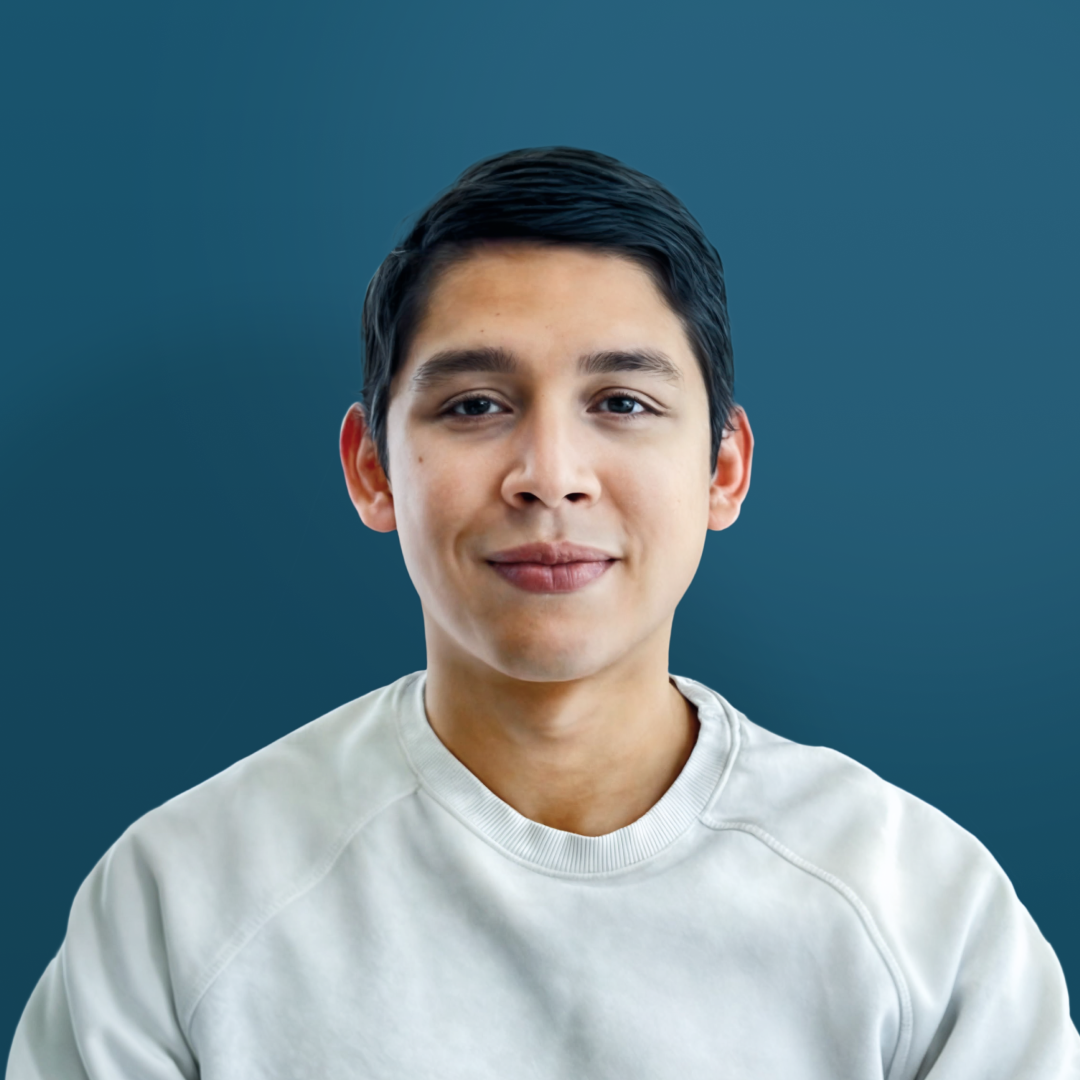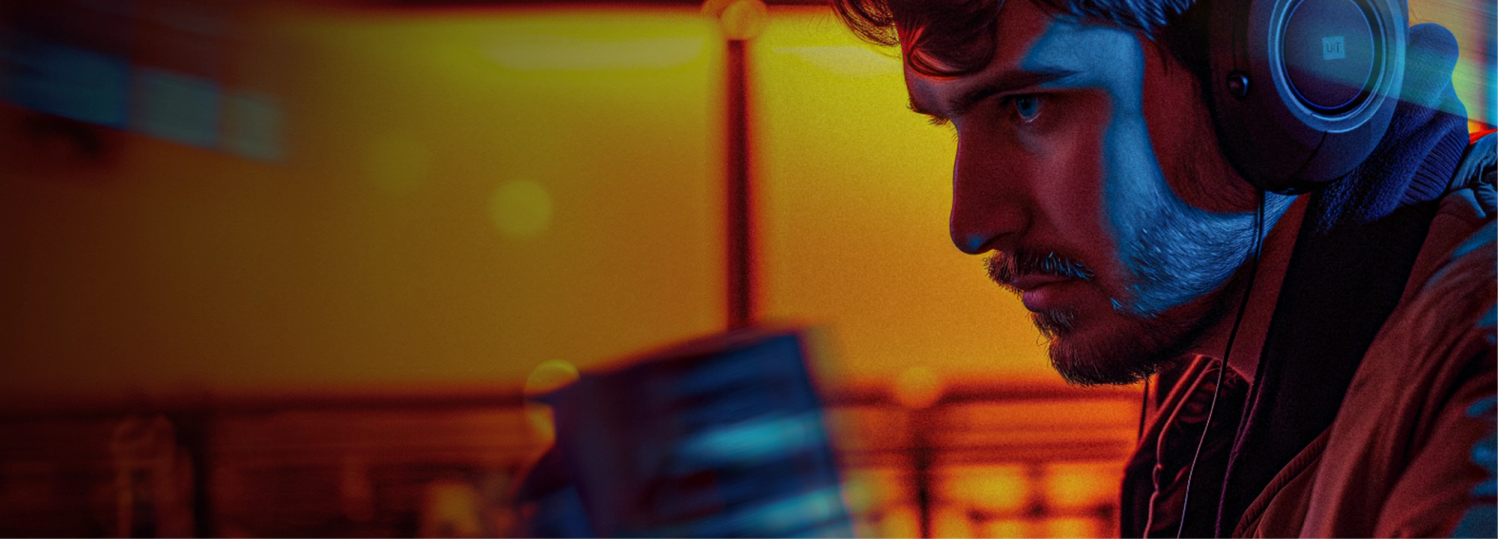Battle of AI Generators: Leonardo AI vs. Midjourney in 2025


As the AI revolution gains momentum, picking the right tool for your team or project can seem impossible. Cut through the confusion with this handy guide to two of the most prominent players in the image generation market, Leonardo AI vs. Midjourney. Superside’s real-world applications also provide valuable insights into what’s possible.
As new AI creative tools flood the market, choosing the right AI image generator for your project can feel daunting. Every tool promises to transform your creative process and instantly bring your vision to life. But what’s the difference between them, and which should you pick for your next project?
Two major AI image generators in the market right now are Midjourney and Leonardo AI. If you’re wondering how these giants stack up against each other, we’re here to cut through the confusion. This isn’t just a comparison; it’s an epic showdown. We take a closer look at what each platform can (and can’t) do for your brand.
It may be worth knowing that, at Superside, we produce cutting-edge creative combining the latest AI tools and the expertise of our creatives. We’ve also got the inside scoop from Leonardo AI’s Senior Creative Technologist Jessie Hughes, who spoke at our recent live event, “The Infinite Canvas.”
Read on for our deep dive into the details of Midjourney vs. Leonardo AI.
Face-to-Face: Midjourney vs. Leonardo AI
Leonardo AI and Midjourney are both AI art generators that respond to text prompts in order to create unique creative content. Need an Impressionist oil painting of a steampunk cat? How about a sentient meatloaf floating in space? Is it time to cut your annoying ex out of that stunning beach photo? If you can dream it and describe it, you can have it.
However, there are some important differences between Leonardo AI and Midjourney. Both are powerful platforms, but they work a little differently and are suited for different kinds of generative AI projects.
Before diving into a detailed comparison, let’s explore the origins and tech behind each platform.
The History Behind Leonardo AI and Midjourney
The history of AI image generation is longer than you might think: Artists began using rudimentary AI to create images in the 1970s. However, the last few years have seen an unprecedented gen AI explosion in multiple industries, from advertising and marketing to medicine and engineering. A recent McKinsey survey showed that the number of organizations regularly using AI almost doubled in just ten months.
Both Leonardo AI and Midjourney are products of this AI revolution. Leonardo AI started with a tiny Australian team in 2022 and has quickly overtaken some of its most formidable competitors. Leonardo AI’s Senior Creative Technologist, Jessie Hughes, highlighted this remarkable growth at Superside’s recent AI summit, “The Infinite Canvas.”
Leonardo AI’s rapid growth has been incredible. It was founded by six Australians 18 months ago. We now have over 16 million users, the third-largest Discord community in the world and over 108 employees. We’re going up against the big players in Silicon Valley as a true competitor, a powerful testament to the quality of our product.

Midjourney, meanwhile, started public life as a Discord bot. It made the leap from a private demo to a public tool on the Midjourney Discord server in 2022. Unlike Leonardo AI, Midjourney requires users to have a Discord account, fostering a uniquely social and collaborative environment.
At Superside, we understand AI’s limits. It’s a revolutionary creative tool, but can’t replace human empathy or imagination. Midjourney founder's David Holz shares our view.
We see Midjourney’s AI as an engine for the imagination. Cars are faster than humans, but that doesn’t mean we stopped walking. When we’re moving huge amounts of stuff over huge distances, we need engines, whether that’s airplanes or boats or cars. So it’s a very positive and humanistic thing.

If an AI art generator can’t think, where does it get its ideas? Both Midjourney and Leonardo AI generate images based on pattern recognition from huge datasets. They draw on users’ text prompts to create new visuals based on the millions of images in their training sets. That’s why mastering the art of the prompt is crucial for achieving good results.
As Holz points out, all AI creators are trained on more or less the same datasets. The differences between them lie in how they use that information, the parameters they work with and their user interfaces.
Our training data is from the same place as everybody else’s—the internet. Pretty much every big AI model just pulls off all the data it can, all the text it can, all the images it can. Scientifically speaking, we’re at an early point in space, where everyone grabs everything they can, dump it in a huge file and kind of sets it on fire to train some huge thing. No one really knows yet what data in the pile actually matters.

Leonardo AI vs. Midjourney: Full Comparison
AI doesn't stifle or replace human creativity: It amplifies it, providing a powerful way to kickstart processes and generate unexpected ideas. At Superside, we harness the strengths of AI to deliver AI-enhanced creative services, refined and developed by our talented, globally distributed team.
We’re excited to share the capabilities of both platforms so you can make an informed choice and find your own favorite. We’ve weighed up core features, user experience, quality, speed, customer support and pricing.
1. Core features
While both Leonardo AI and Midjourney turn text prompts into visuals, their core features differ significantly.
Leonardo AI is a standalone web app with an intuitive, user-friendly interface that lets you start creating in seconds. You can easily adjust your art style, brush strokes, output speed, image quality, color palette and other details to match your exact requirements. The app also allows you to add specific elements such as coloring book illustrations, anime styles or vintage Christmas themes, plus a wide range of preset models for different output styles.
One of Leonardo AI’s standout features is its personalized model training, enabling you to tailor the AI to your own datasets. This gives you unparalleled flexibility and control, enabling genuine collaboration between your imagination and Leonardo AI’s groundbreaking technology.
Finally, Leonardo AI has two unique prompt features to let your imagination soar. Uniquely in comparison to other AI art creators, Leonardo AI features negative prompts so you can note details you don’t want in your picture. The AI-assisted prompt generator can write prompts for you or improve your prompts for more detail and specificity. At our “Infinite Canvas” AI summit, Jessie Hughes demonstrated this powerful capability.
The ‘improve prompt’ feature will analyze my poorly written prompt and transform it. Now, it’s turned into ‘an elegantly sculpted marble statue of a seated woman, meticulously fashioned to capture her serene grace and timeless beauty.’ The system at Leo really takes the information you put into the prompt and refines it. It’s great that it's done the work for me, so I don’t have to.

Midjourney is a Discord-based platform that requires both a Discord account and a paid subscription. It specializes in image creation, but unlike Leonardo AI, it doesn’t extend to video and animation. Overall, Midjourney has fewer specific customization features than Leonardo AI, though you can still request specific styles, image sizes, aspect ratios and more.
Midjourney’s magic really shines in the social and community aspects of Discord, plus its tendency to produce unexpected, surreal or dream-like images. It’s a good choice if you prefer happy surprises to extensive control. Key features include background removal, object recognition, a re-roll feature to regenerate images, instant iteration with the command buttons and an outpainting feature for larger, more complex compositions.
Unlike Leonardo AI, Midjourney allows image prompts as well as text-to-image, so you can generate new images from existing ones.
2. User interface and experience
One of the major differences between Leonardo AI and Midjourney is the user interface. Leonardo AI offers a sleek, intuitive and easy-to-navigate experience, whether you’re brand new to AI image creation or have been in the game for years. All options are clearly laid out on the homepage, and a quick tutorial on signup gives you all the basics to get started.
The only potential downside is that the extensive array of options and tweaks might feel overwhelming for first-timers.
(Source: Leonardo AI)
For those who have never used Leonardo before, this is what you’ll see when you get to the homepage. We can do pretty much everything on this platform, which is why it can be a bit overwhelming at first. However, it’s a web-based interface that becomes quite intuitive over time.

Midjourney, on the other hand, requires navigating both Discord and the Midjourney bot. This will be no problem for those already familiar with Discord, but newcomers might need some time to adjust. If you’re stuck, there’s plenty of clear guidance to help you get started, including creating a Discord account, joining the server and subscribing to a Midjourney account. Once you’ve cleared these hurdles, you can learn the rest through experimentation and play.
Since Midjourney only functions via Discord, the social aspect is crucial to the user experience. All your Midjourney creations are public by default, and there’s a vibrant, active community to draw on for wisdom and feedback.
(Source: Midjourney)
A lot of people ask us, why don’t you just make an iOS app that makes you a picture? But people want to make things together, and if you do that on iOS, you have to make your own social network. And that’s pretty hard. So if you want your own social experience, Discord is really great.

3. Art style and quality
Both platforms offer multiple art style options and let you adjust your work as you go. For variety and ease of use, however, Leonardo AI is a clear winner. It offers style options from photorealistic to stylized, concept art or illustration. It consistently delivers high-quality, detailed images with realistic details and vibrant colors.
Midjourney also offers flexible stylistic customization but tends toward more abstract, surreal and experimental outputs. While it produces beautiful images ideal for artistic experimentation, its style might not always suit projects requiring detailed control (e.g., ad creative or brand assets).
Regardless of your choice of platform, iteration and human input remain essential for creating high-quality, shareworthy images. During our AI summit, Jessie demonstrated how iteration and refinement deliver the perfect final product.
In MidJourney AI, you can remove the background as part of rapid ideation. For instance, if I want to add an extra feature, I’ll include it, such as a butterfly. Once that's added, I can remove the background again. My goal is to create something that matches my initial vision. I might increase the creativity setting to see different variations. As I adjust the creativity, it generates new designs, allowing the AI to experiment and refine the final look. This process helps in aligning the output with my creative ideas.

4. Performance and speed
In terms of performance and speed, there’s not much difference between Midjourney and Leonardo AI. Both can generate unique images in seconds. The premium version of Leonardo AI lets you toggle between “fast” and “quality” settings, which can be useful if you’re brainstorming or need to generate initial ideas at speed.
5. Upcoming features and updates
As AI tools take the world by storm, an arms race for updates and new models is well underway. Leonardo AI is keeping pace with major recent updates, including a new sleek, modern UI that users love.
Its biggest recent breakthrough, however, is the beta launch of its proprietary foundation model, Leonardo Phoenix. A foundation model powers all AI applications, and until now, Leonardo AI relied on the open-source model Stable Diffusion. Phoenix is a game-changer, offering improved coherence, clear text generation and solutions to common AI difficulties like generating realistic hands and faces.
Midjourney also made significant strides with the release of Midjourney 6.1 in mid-2024. This update brought enhanced prompt accuracy for longer prompts and improved coherence. Additionally, it enabled advanced prompting and remixing capabilities, while introducing new parameters for more photographic or literal results.
Looking ahead, Midjourney recently announced the start of training for Midjourney 7, expected somewhere in 2025. While details remain under wraps, the platform’s rapid evolution in just two years suggests it’s likely to be spectacular.
6. Support and resources
Both tools have great free resources to help you master the basics and get started. Midjourney’s “Quick Start” guides cover everything from using Discord to setting up your first prompts, ensuring you’re up and running in no time. Plus, Midjourney’s social nature means there’s an active Discord community ready to assist you with any questions or challenges.
Note that Leonardo AI has a comprehensive help center with FAQs, feature guides and more. You can contact support directly through the in-app messaging feature or browse the detailed Wiki for community mentorship and informative articles.
7. Pricing models and value
There’s a significant pricing difference between Midjourney and Leonardo AI. Leonardo AI offers a generous free tier, with 150 API credit tokens daily. Each AI image generation tool consumes a variable amount of credits, which means you burn through your quota quickly. That said, the free version is ideal for learning and experimenting with the platform.
The premium version of Leonardo AI costs between $10 and $60 per month, depending on the number of tokens and extra features you need.
(Source: Leonardo AI)
Midjourney no longer offers a free option, so you have to make a financial commitment to start experimenting. Plans start at $10 per month and go up to $120, depending on your volume and speed needs.
(Source: Midjourney)
Overall, Midjourney’s pricing is a little more straightforward but Leonardo AI wins on accessibility for its free offering. Leonardo’s paid tiers are well worth it, potentially saving multiple subscription costs in the long run.
I think that’s what makes this different for me and why Leo worked. I spent all last year working with AI tools and tried everything under the sun, but I was constantly jumping between different platforms. As a creative, that bothered me. First, I was paying for six different subscriptions—for image editing, motion graphics, upscaling and more. By the end of it, I was spending $80 to $90. Then I found Leo, and the upscaler was just there, integrated seamlessly.

Real-World Applications of Leonardo AI and Midjourney
While many creative teams are hesitant about introducing AI to their workflows, we’re putting AI through its paces and enjoying the combined power of technology and human ingenuity. Superside recently passed the major milestone of 500 AI-enhanced designs, saving our customers over $1.4 million in design costs.
At Superside, we use both Midjourney and Leonardo AI to deliver winning creative assets. Here’s how the AI giants stack up in real-world case studies.
1. Midjourney: SmartNews
Superside’s creatives used Midjourney to create a digital campaign for the Japanese news outlet SmartNews. Pushing Midjourney’s capabilities to the limit, we created an impactful campaign that saved 67.5% on traditional design time.
SmartNews needed unique, dynamic sports images that stood out from traditional stock sports photography. A combination of carefully crafted Midjourney prompts and in-house iteration delivered energetic, AI-enhanced sports action shots with a vintage, cinematic feel. Thanks to Midjourney, we were able to create over 150 unique image options in just four hours.
2. Branding magic with Leonardo AI
Jessie Hughes took us through a Leonardo AI workflow at our recent “The Infinite Canvas” virtual summit. Watching Jessie create stunning campaign assets in mere minutes was a mind-blowing demonstration of AI’s amplification of human creativity.
Jessie took a set of existing brand assets for our event marketing, featuring classical marble statues with a modern twist: VR headsets, laptops and cellphones. She uploaded a headshot as a character reference, along with the existing campaign images. In seconds, she created an image of a statue with her own face on it, perfectly in tune with our existing assets.
Using the same process, she created an image of the Superside logo as a gold and marble tile featuring the famous inventor Leonardo Da Vinci, along with a gleaming gold version of the Superside logo.
In just minutes of watching Jessie play with Leonardo AI’s capabilities, the endless possibilities of the platform were clear. If you can master the right combination of prompts and settings, your imagination is the limit.
Here at Superside, we’re already pushing the boundaries of AI in everything from ad campaigns to UX design. Thanks to the growth potential of platforms like Leonardo AI and the dizzying pace of technological development, the future holds unlimited possibilities.
Verdict: Leonardo AI or Midjourney?
While both are brilliant tools to let your visual imagination fly, we have a clear favorite. Now that we’ve done a deep dive into both platforms, comparing Leonardo AI and Midjourney shows some clear pros and cons.
1. Midjourney: Pros
- Social interface and built-in community appeal to those who want to work collaboratively
- Creates high-quality, aesthetically pleasing images
- If you’re already familiar with Discord, you’ll be comfortable with the interface
- Easy to adjust and tweak images iteratively to reach the results you want
- Good choice if you enjoy working experimentally, without fixed results in mind
2. Midjourney: Cons
- Smaller variety of image styles to choose from
- Requires both a Midjourney and a Discord account with no standalone app or web platform
- Steep learning curve if you’re not already familiar with Discord
- No free version, so learning and experimentation require a financial commitment
- All images are public by default, so it may not be suitable to generate branding or business assets
- Limited customer support
3. Leonardo AI: Pros
- A well-designed, intuitive interface
- Highly customizable, including settings for specific styles, reference images, output quality, color palettes, negative prompts and more
- High-quality outputs, including an “image alchemy” tool to fix common problems typically associated with AI-generated images
- AI prompt assistant helps you create more accurate, useful prompts
- Includes motion and animation capabilities
- A wider variety of outputs, from photorealistic to abstract design
- Excellent customer support on multiple channels
- A free tier allows for easy learning and experimentation
4. Leonardo AI: Cons
- Less stringent community guidelines, which means the public feed may expose you to not-safe-for-work content
- Variable pricing can make costs and needs difficult to predict
- Multiple options for customization and output types can feel a little overwhelming if you’re a newbie
| Superside's Verdict | Pick Leonardo AI If | Pick Midjourney If |
|---|---|---|
| Leonardo AI excels with its ease of use, intuitive interface, and customizable features. MidJourney is ideal for artists seeking a collaborative environment, but Leonardo AI offers more accurate, flexible image generation without a steep learning curve. For branding or customer-facing projects, Leonardo AI is likely the better choice. | You want an easy-to-use, accessible AI image generator that can serve a wide range of needs, with seemingly infinite customization and iteration options. | You’re an artist looking to experiment with beautiful, surreal AI art, especially if you enjoy working collaboratively and riffing off others. |
Superside’s AI Revolution: Dominating Leonardo AI, Midjourney and Beyond
At Superside, we believe in using the best tools for the job. Our AI-enhanced creative delivers brilliant work at a fraction of the time and cost, making Superside an excellent choice for stretched marketing and design teams.
Of course, there’s very little creativity without the human touch. All our AI-enhanced work is managed and iterated by our talented creatives at every step of the process. Whichever AI image creator you choose, remember that while it’s a brilliant starting point, it’s no substitute for your own human creative spark.
Are you curious about how Superside can work AI magic for your next campaign? Book a call and see the Superside difference.
Meet Roger, a content marketer driven by his love for online search, digital marketing, and performance marketing. When he's not immersed in the latest updates on Google, AI and social media, you'll find him passionately crafting strategies to simplify online searches for people, sparing them the frustration of navigating through endless pages. As a marketer, Roger Match has turned into the perfect match for Superside, helping us showcase our purpose, objectives and essence to the world.
You may also like these

The Creative Struggle for Meaning in the Age of AI Adoption
Imagine being a painter in the 1840s, with people traveling for weeks to be immortalized by your delicate brushwork. As you finish your latest masterpiece, adding final details, a commotion catches your attention.Outside, people marvel at a new invention—a sturdy black box that captures reality in minutes, with more detail than any painting could achieve. You feel a shiver down your spine. If just pressing a button can do what you can, what are you here for?AI adoption has come to disrupt not only every industry, from medicine to finance to marketing, but also our daily lives. Large Language Models (LLMs) began as thought partners, capable of generating text in any language, tone or style, offering fresh ideas, planning support or even challenging your thinking. Then, other types of Gen AI like image generation, voice, music and video enhancement and other tools, emerged. What used to take long hours or days (maybe months) and specific skills, is now achievable by knowing how to prompt effectively and trial and error.Our AI Consulting Team surveyed over 800 creatives from 80 different companies and more than 10 countries. We listened to their thoughts and concerns on this new wave. By now, we have a much clearer understanding of how they think and feel about their work, and the changes AI is introducing into their workflows and their lives. Here are some of the results.
Beyond the Brief: All the Buzz About AI-Powered Ads
Global agricultural technology leader, Syngenta uses science to advance crop production. However, even the most cutting-edge innovations must work in harmony with nature. Attracting pollinators, like bees and butterflies, Operation Pollinator helps boost crop yields.But what does this have to do with using AI for ad creative? When guided by human ingenuity and expertise, AI is a catalyst that lets you quickly explore and refine ideas.Learn how partnering with Superside helped Sygenta speed concepting and nurture the storytelling of these groundbreaking ads.The Brief: Promoting Operation Pollinator To kick off the project, Syngenta shared an existing Operation Pollinator explainer video. There were no static images for this initiative, which meant the creative team was starting from scratch. Vidrio and Montelongo had a blank slate, a lot of freedom and only two days to complete the entire project.
Responsible AI: What Enterprise Brands Need To Know
Responsible AI isn’t just about what is legally allowed, it also speaks to the core of your brand identity, leading you to ask: What’s important to you as a brand? What are the things that make your brand truly unique?To empower you to take fundamental actions to ensure an effective approach to AI adoption that aligns with your brand’s core values, I'll take you through a high-level overview of why responsible AI is important, explain how to make crucial decisions and share examples from brands that have tackled these same questions.For many of our enterprise customers, the impact of using generative AI to produce marketing and advertising creative extends far beyond productivity gains—it helps your brand to stand out in a crowded marketplace, lets you iterate faster than your competitors and achieve your business targets.Whether you're an established leader or steadfast category disrupter, the way you roll out any initiative defines you. AI integration is no different, which is where the concept of practicing responsible AI comes in.Practicing Responsible AI: Purposeful Actions for Enterprise Brands














